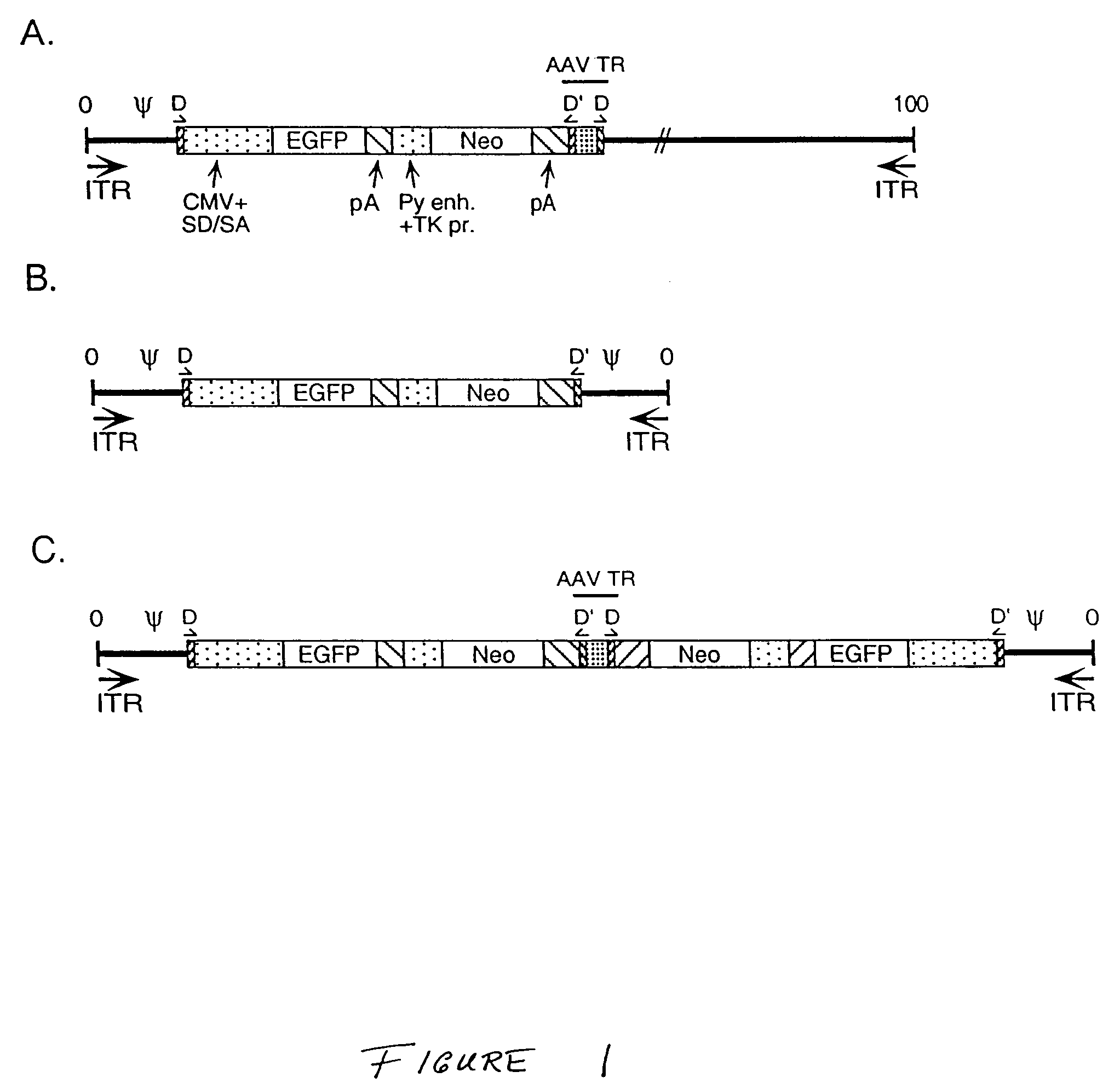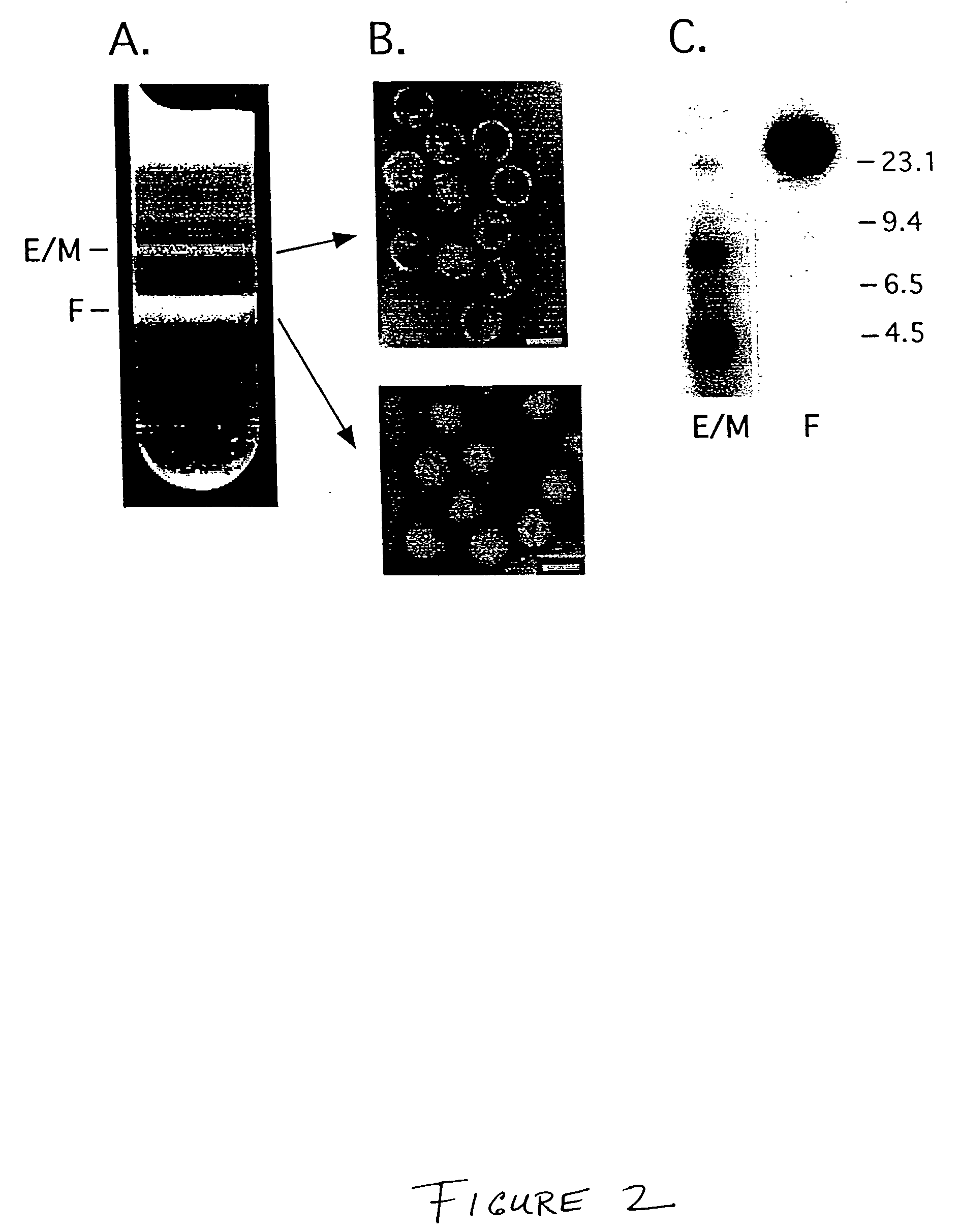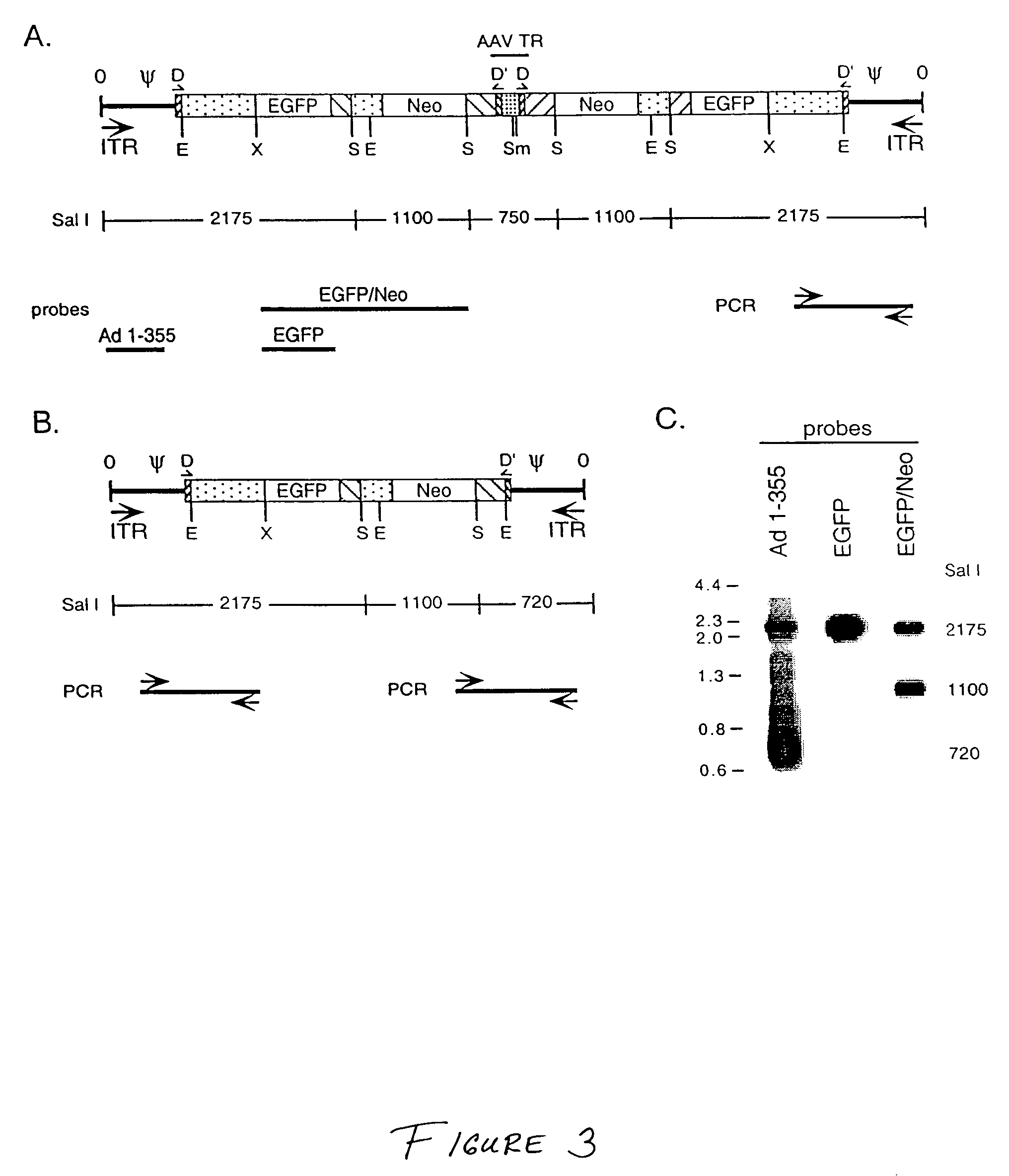Hybrid adenovirus/adeno-associated virus vectors and methods of use thereof
a technology of adenovirus and adenovirus, which is applied in the direction of viruses/bacteriophages, dsdna viruses, biocide, etc., can solve the problems of adenovirus as a long-term gene transfer vector, affecting the use of adenovirus as a long-term gene therapy system, and affecting the immune clearance of virus-infected cells, so as to achieve stable integration and long-term gene expression, stable gen
- Summary
- Abstract
- Description
- Claims
- Application Information
AI Technical Summary
Benefits of technology
Problems solved by technology
Method used
Image
Examples
example 1
Cell Culture and Viruses
[0127]Unless otherwise mentioned, the exemplary cells and viruses described in the following Examples were manipulated as follows.
[0128]293 (ATCC #CRL-1573), Hela (ATCC #CCL-2) and A549 (ATCC #CCL-185) cells were maintained as monolayer cultures in Dulbecco Modified Eagle Medium (DMEM) containing 10% bovine calf serum (HyClone). C12 cells that carry the AAV Rep and Cap genes [Clark et al. (1996) Gene Ther. 3:1124-32] were propagated in DMEM containing 10% heat-inactivated fetal bovine serum (HyClone).
[0129]HepG2 (ATCC #HB-8065), COS1 (ATCC #CRL-1650), HMEC [Ades et al. (1992) 99(6):683-690] cells, and primary human endothelial cells (HUVEC) were cultured using methods known in the art. Briefly, HepG2 cells were propagated in Eagle Minimal Essential Medium (EMEM) containing 10% fetal bovine serum. COS1 cells were propagated in DMEM containing 10% fetal bovine serum. HMEC cells were propagated in DMEM containing 10% bovine serum, 1 μg / ml hydrocortisone, and 10 ...
example 2
Construction of Exemplary Adenovirus / Adeno-Associated Virus Hybrid Plasmid and Virus
[0132]This Example discloses generation of Ad / AAV hybrid plasmids and viruses containing either the green fluorescent protein (EGFP) reporter gene and the neomycin selectable marker (Neo) gene, or the human Factor VIII gene.
[0133]The adenovirus / adeno-associated virus hybrid plasmid pAd / AAV-EGFP-Neo was generated through multiple cloning manipulations beginning with plasmid pBS-TR-3D (Drs. Sergei Zolotukhin and Nick Muzyczka, University of Florida Gene Therapy Center). pBS-TR-3D is based in plasmid BlueScript (pBS) and contains within the pBS polylinker region of the left AAV terminal repeat sequence (145 bp, A / B / B′ / C / C′ / A′ / D=flop configuration) [Muzyczka (1992) Curr. Top. Microbiol. Immunol. 158:97-129], a 1300 bp fragment of stuffer DNA, and the right AAV terminal repeat with a double-D (DD) sequence (165 bp, D′ / A / B / B′ / C / C′ / A′ / D=flop configuration) [Xiao et al. (1997) J. Virol. 71:941-8]. The Ad5 le...
example 3
Generation of Exemplary Monomeric and Dimeric Mini-Adenoviruses in Exemplary 293 Cells
[0136]This Example demonstrates generation of monomeric and dimeric min-adenoviruses using the parental Ad / AAV hybrid viruses of Example 2.
A. Mini-Adenoviruses Using Ad / AAV EGFP / Neo Virus
[0137]For generation of mini-adenoviruses using the parental Ad / AAV EGFP / Neo virus, 293 cells which complement the E1 deletion in the hybrid virus to allow virus replication were infected with a cellular lysate containing the parental Ad / AAV hybrid virus which carries the EGFP-Neo cassette as described in Example 2 (from a third passage virus stock) using an MOI of 10 PFU / cell. Two days after infection, cleared cellular lysates were prepared and treated with 500 U / ml DNase I and 250 mg / ml RNase A. Ad / AAV and mAd viruses were separated on a CsCl2 step gradient. The lower band (F) represent full virus particles. The upper band (E / M) represents lighter particles that includes empty particles, light intermediate partic...
PUM
 Login to View More
Login to View More Abstract
Description
Claims
Application Information
 Login to View More
Login to View More - R&D
- Intellectual Property
- Life Sciences
- Materials
- Tech Scout
- Unparalleled Data Quality
- Higher Quality Content
- 60% Fewer Hallucinations
Browse by: Latest US Patents, China's latest patents, Technical Efficacy Thesaurus, Application Domain, Technology Topic, Popular Technical Reports.
© 2025 PatSnap. All rights reserved.Legal|Privacy policy|Modern Slavery Act Transparency Statement|Sitemap|About US| Contact US: help@patsnap.com



